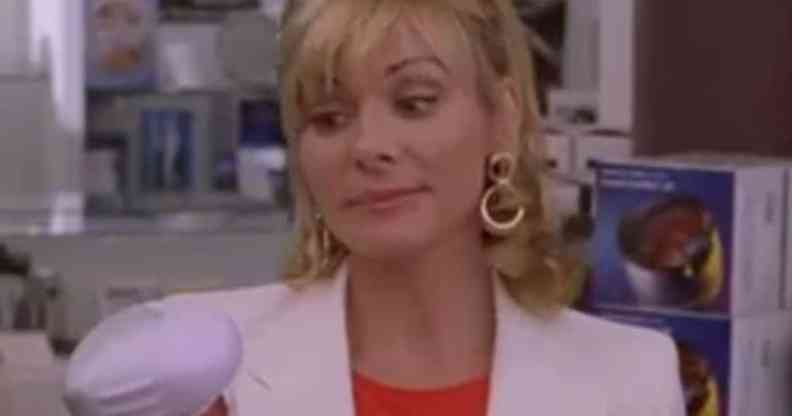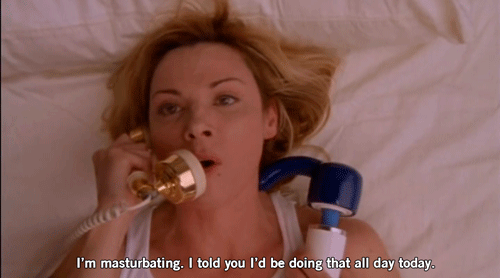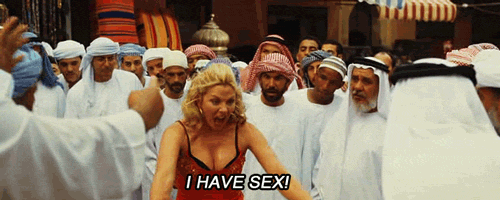The highs and lows of Kim Cattrall’s Sex and the City icon Samantha Jones

Samantha Jones. (HBO)
Samantha Jones. (HBO)
Sex and the City has confirmed its “next chapter” – a reboot series titled And Just Like That… – will be the first not to include the legendary Samantha Jones.
When Samantha Jones is first seen on Sex and the City, the much-loved and much-hated TV show that spawned a pair of big-screen films, she’s simply introduced as: “Public Relations Executive, Unmarried Woman.”
With her unapologetic single lifestyle, Samantha, played by Kim Cattrall, quickly ascended as a fan favourite.
Throughout the six-season run of the HBO show the character came to shoulder some of the show’s edgier (for the time) plotlines with joy and warmth.
But as fans rewatch the series – especially ahead of the Sex and the City reboot – some have begun to realise that for all her merits, Samantha did carry some of the show’s more troubling qualities too.
As we say goodbye to Samantha Jones for good, here are some of her best and worst moments.
The good.

1. Her sex positivity.
As much as Sarah Jessica Parker’s Carrie Bradshaw is the show’s protagonist, it’s actually through Samantha that Sex and the City pushes the boundaries of how female sexuality is represented.
She’s steadfastly single and committed to it, often purposefully avoiding relationships, mocking monogamy and casually discussing sex with her friends in a way that most women – and men – would never dare to.
What’s more, Samantha refuses to be shamed for her enthusiasm for sex, extolling the virtues of masturbation and ensuring that sex is always on her terms.
She’s also vocal about age discrimination as she lives through her 40s and early 50s, with her very existence on screen rejecting the idea that women and their sexualities are only “acceptable” up to a certain age.
2. Samantha Jones and Maria brought queerness to Sex and the City.
In season four, Samantha explored her sexuality and became the first of the central four characters to embark on a same-sex relationship.
Her fling with Maria (Brazilian actress Sônia Braga) was short-lived, with many fans of the belief that Maria deserved better, but it was notable for queering the famously white, straight and cis series, even if only just a little. Hopefully, the Sex and the City reboot does better.
3. Cancer representation.
In Sex and the City’s final season, Samantha is diagnosed with breast cancer. It plunges the vastly self-sufficient character into a kind of vulnerability she’s long sought to suppress.
The franchise suddenly leaps from the girls discussing the pros and cons of threeways to Samantha dealing with chemotherapy, the loss of her libido and her own mortality.
It remains one of Sex and the City‘s most heart-wrenching plotlines, with Samantha ultimately becoming an acclaimed public speaker – removing her wig in front of dozens of people in defiance of how cancer survivors “should” be.
The bad.

4. The time Samantha Jones feuded with trans sex workers.
After Samantha moves into New York’s trendy meat-packing district – having purchased property there – a trio of trans sex workers become a thorn in her side, keeping her up for all the wrong reasons as they chat loudly underneath her window in the early hours.
During a breakfast dish session, she and the girls trade transphobic barbs, with Samantha referring to the women as “trannies”.
While the episode ends with Samantha inviting the trans women to a rooftop barbeque party, her treatment of them beforehand – which included her throwing a bucket of water at them and threatening to call the cops – didn’t sit well then, and certainly doesn’t now.
5. When she fetishised a Black man.
During a season three episode that can only be described as “When the gang acknowledge people of colour exist”, Samantha dates Black music mogul Chivon, played by Asio Highsmith.
It was the first episode to include Black characters in any meaningful way, and to clumsily attempt to discuss race – where it fell very, very short.
The episode sees Samantha proclaim “big Black c**k” several thousand times and announce: “I don’t see colour — I see conquests.” She even begins to wear African-inspired prints and is painted as the most progressive of the quartet for deigning to date a Black man – the only time she’s shown to do so.
The episode ends in a fight between Samantha and Chivon’s sister Adeena, who disproves of her brother dating a white woman – though no attempt to explain this is made, other than the character explaining: “It’s a Black thing.”
6. When she became the epitome of an American tourist.
During Sex and the City 2 – you know, that film that most fans refuse to believe is even canon – Samantha and the girls travel to Abu Dhabi, the capital of the United Arab Emirates.
There is a seemingly endless list of truly cursed moments in the film, but the scene of a boorish Samantha venting the frustration of not being able to bring her hormone pills to the trip sat terribly with viewers.
An infamous sequence – universally deemed the low-point of the entire franchise – sees Samantha scream “I have sex”, gyrating and throwing condoms at a gathered crowd of local men. The gang are then saved by a group of Muslim women who dress them in niqabs so that they can sneak past the offended men.
The original series is available to stream on NowTV and Amazon Prime Video, while the first film can be rented on Amazon Prime Video, iTunes or Google Play and it’s sequel is available to stream for free as part of an Amazon Prime membership.
This article contains affiliate links, PinkNews may earn revenue if you click through and purchase products through the links.

